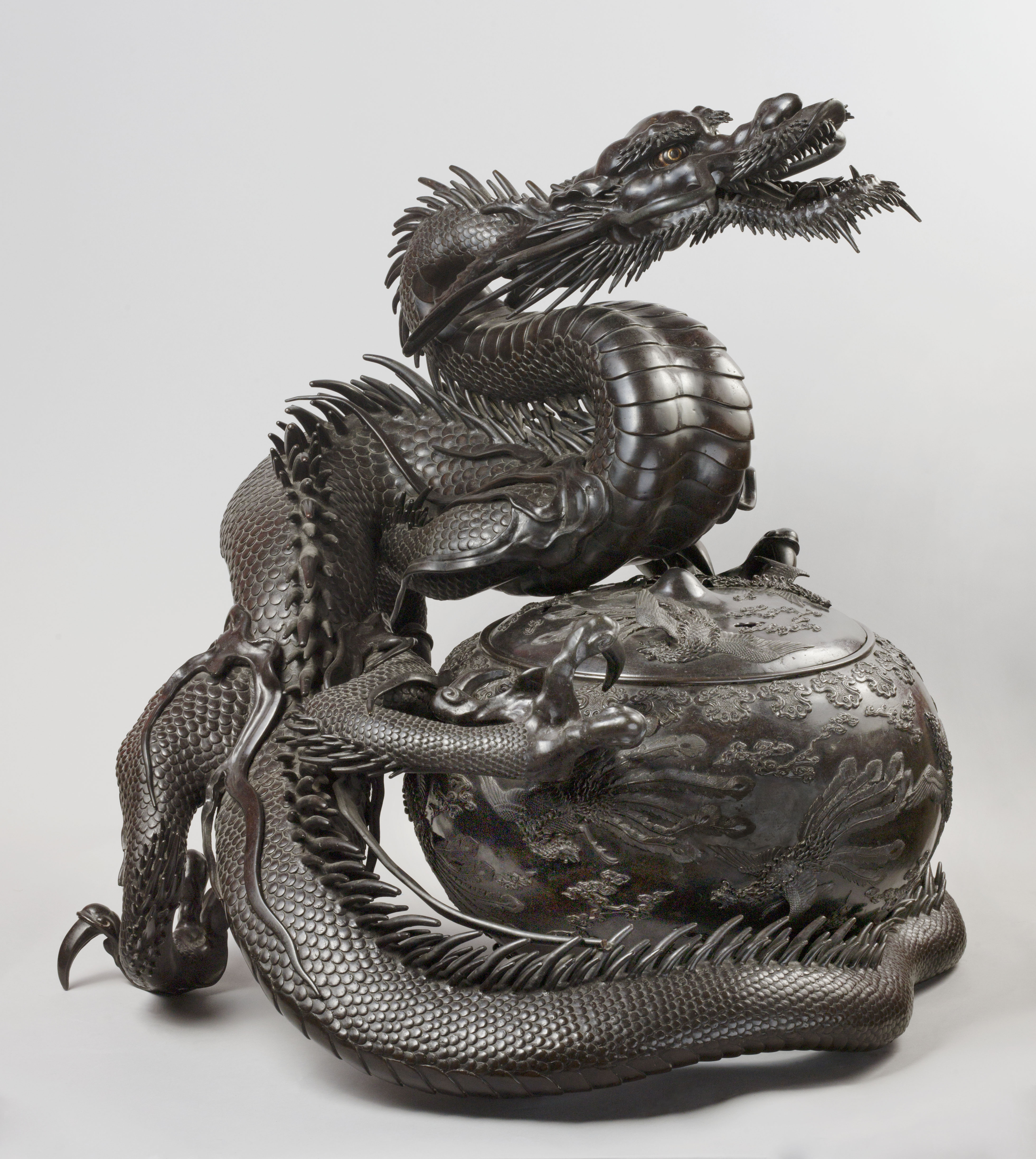
Brûle-parfum (kōro 香炉) au dragon
Bronze, Fonte à la cire perdue
Brûle-parfum
"Toun chû"
Legs : Cernuschi, Henri
M.C. 2082
This superb incense burner made of two assembled pieces, with a fine, very dark patina, was made using the lost-wax casting technique (rōgata imono). Starting in the 17th century, this process achieved a high level of sophistication, enabling great precision in the details. It was used to make religious statues as well as domestic items such as vases for flower arranging or okimono (literally, “object for display”), very often of Chinese inspiration.
Here, the spherical container and its openwork lid for the diffusion of incense smoke are decorated with phoenixes and cloud motifs (unmon) in relief. A frieze of repeated stylised, face-to-face dragons on a geometrical ground of swastikas (sayagata) runs around the upper edge. The three-clawed dragon with a fierce bearded face holding the burner exudes a powerful energy through the tension in its sinuous body.
We know very little about the life of the artist, Kimura Toun. Reputed for his dragons, he was the pupil and successor of the bronze caster Murata Seimin (1761-1837), famous for his tortoise-shaped okimonos. He was much prized by Parisian Japoniste circles in the 19th century, and Edmond de Goncourt called him the “soft bronze artist”.
Art animalier au temps des derniers Shogun (XVIIIe - XIXe siècles) : animaux d'Edo - Fonds Cernuschi 1871 - 1872 [exhibition catalogue with black-and-white illustrations], Paris, Musée Cernuschi, 1986, no. 82, p. 45.
